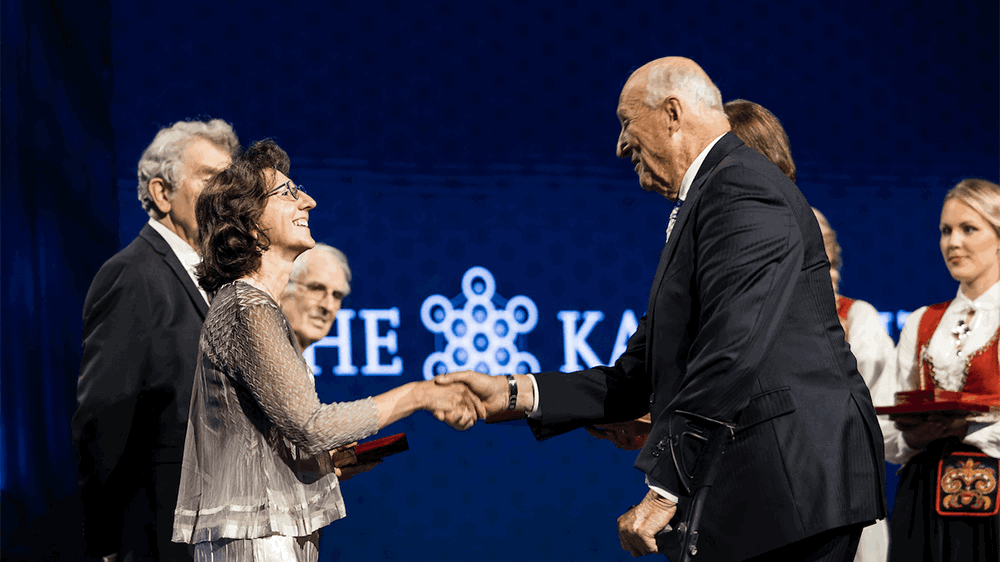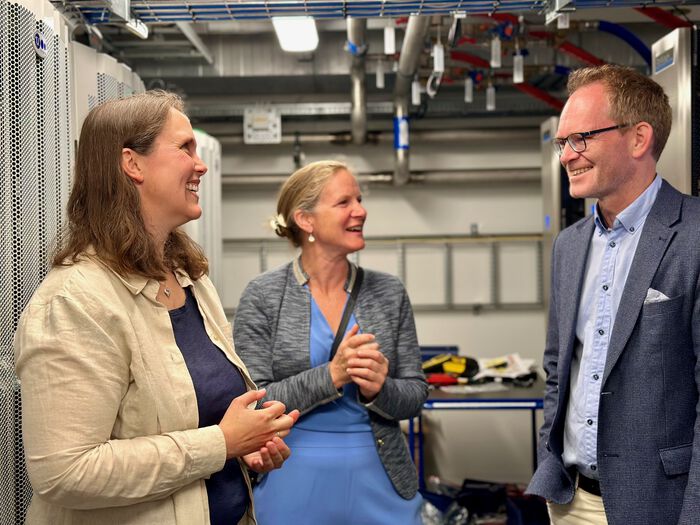Hansteen has led the committee that awards Roger Ulrich (USA), Jørgen Christensen-Dalsgaard (Denmark) and Conny Aerts (Belgium) for their breakthrough research in Astrophysics in Oslo 6th of September.
"The winners also developed tools to study the interior of stars precisely", Hansteen adds.
Hansteen is chair of the 2022 Kavli Prize Astrophysics Committee and professor at RoCS (Rosseland Centre for Solar Physics) at UiO.
Fakta
The Kavli Prize honors scientists for breakthroughs in astrophysics, nanoscience and neuroscience. The prize consists of USD $1,000,000 in each of the scientific field. The Kavli Prize Award is presided over by His Majesty King Harald Ceremony and was held at the Oslo Concert Hall.
It is pretty amazing that helioseismology and astroseismology makes it possible to "see" the interior of stars - what we cannot get information about directly via light.
The three researchers received the Kavli Prize in Astrophysics 2022 for "research that has laid the foundations of solar and stellar structure theory, and revolutionized our understanding of the interiors of stars.” This includes being able to understand the inside of our closest star - the Sun.
Solar scientists at RoCS celebrates the award and director Mats Carlsson says:
Helioseismology is the study of the interior of the Sun from observations of the vibrations of its surface. Asteroseismology is the study of oscillations in stars. The three prizewinners have all been crucial in developing these theories.
Development of new theories
The well known English astronomer Sir Arthur Eddington (1882 - 1944) was the first to make models of stellar interiors. He is alleged to have stated that unfortunately one would never be able to observe the interiors of the Sun and other stars. This was before our prize-winners pioneering work pawed a new way.
Roger Ulrich was the first scientist to show that oscillations observed on the surface of the sun can be used to make precise measurements of the characteristics of its interior, and a mathematical model he developed gave the field of helioseismology a theoretical foundation. He also demonstrated that the sun behaves like an organ pipe, ringing with large numbers of acoustic waves, each having a resonant frequency.
Jørgen Christensen-Dalsgaard is recognized for his work in developing models of the interior of stars, in particular the use of seismic techniques for the study of the Sun and other stars, opening entirely new avenues for the understanding of stellar evolution and the use of information on stars in other areas of astrophysics.
Conny Aerts was central in using these observations to create detailed knowledge about the physics of the interiors of tens of thousand stars. She has moved the knowledge front the other Kavli laureates have contributed to on the Sun to encompass large stellar populations.
Listen to the Alan Alda interview with Conny Aerts on the podcast "Clear + Vivid".





